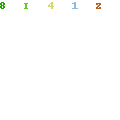
JAPAN is teetering on the brink of nuclear catastrophe amid fears a radioactive cloud could envelop Tokyo's 13million residents.
The Foreign Office warned Brits to avoid the capital as it was feared a SECOND nuclear reactor was heading for meltdown after Friday's devastating earthquake and tsunami.
And there were heightened concerns following a hydrogen blast 170 miles north at the stricken Fukushima nuclear plant.
The explosion – inside No3 reactor – was similar to an earlier one at a different unit of the facility.

International authorities had declared a state of emergency at the Onagawa nuclear plant after radioactivity levels in the area exceeded safe limits.
Local officials later told the International Atomic Energy Agency that radioactivity at Onagawa was back to normal.
The heightened readings were blamed on emissions from crippled Fukushima, where workers were desperately pumping sea water into the reactors in a bid to prevent a major meltdown.
The ageing nuclear power station has six reactors.

No1 reactor blew up on Saturday, and officials admitted it was "highly likely" a partial meltdown had already occurred. It is believed radioactive steam was released, with about 160 people exposed, but that most of the radioactive material was contained.

It later emerged that the cooling system pump in No2 reactor had completely shut down, sparking fears a second explosion was imminent.
Experts were frantically trying to cool No3 reactor to prevent deadly uranium fuel pellets melting. Authorities admitted for the first time that radiation around Fukushima is nearing the level where humans vomit uncontrollably, hair can be stripped from the body - and cancer rates soar.
An explosion in No3 reactor would be far worse than the No1 blast, since it contains lethal plutonium as well as uranium.
Cabinet minister Yukio Edano said further blasts could not be ruled out. But he insisted the other reactors would survive as No1 did, saying: "There would be no significant impact on human health."
The explosion means Fukushima is already one of the worst nuclear accidents in history - but so far there has been no major radiation leak.
A complete reactor meltdown could release uranium and other dangerous contaminants, causing major and widespread health problems. More than 170,000 residents were evacuated from a 13-mile exclusion zone. Medics in protective gear scanned evacuees for contamination and gave iodine to protect against radiation exposure.

The shutdown of nuclear plants has left Japan facing months of electricity shortages.
PM Naoto Kan announced rolling power cuts from today, with hospitals, water and gas supplies all being affected. One of the world's leading nuclear experts urged the Government to learn from Japan as the UK prepares to build eight new nuclear plants. Dr John Large said: "You must engineer for the worst accident and build in counter-measures."

He said the Fukushima crisis happened because the reactors automatically shut down in the quake and needed their generators to start up again. But the tsunami that followed knocked out the generators, and Dr Large said the problem should have been predicted.

The tsunami also knocked out a cooling pump at Tokai 2 nuclear plant near Tokyo, but extra pumps kicked in to prevent any danger, officials said.
Seismologist Ishibashi Katsuhiko warned in 2007 that Japan's nuclear plants were vulnerable to quakes. He accused ministers of underestimating the danger, saying: "Reactors had fatal flaws in their design."

Tiada ulasan:
Catat Ulasan